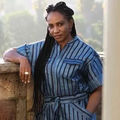FIT Museum to explore fashion trend sources of 250 years
Featuring approximately 100 objects from the museum’s permanent collection, the exhibition will also highlight industry developments that have had an impact on how trends propagate.
Fashion trends change every season, with shifts in print, color, material, embellishment, and silhouette. These derive from a variety of sources, including urban street style, art, music, film, and socio-political movements. The word “trend” first arose as an economic term used to describe shifts in financial markets.
Today, the word is ubiquitous in the fashion media, and trend forecasting companies have made researching and predicting trends a profitable business. Yet, as we move further into the 21st century, specific trends seem increasingly hard to define.
The advent of fast fashion, the internet, and social media have created a quick-paced global environment in which fashion trends emerge and spread in faster and more complex ways than ever before.
By looking back at the history of trends, Trend-ology will help viewers gain insight into the current state of the trend cycle.
Trend-ology will open with an overview of 21st-century developments in fashion retailing. These will include examples from fast-fashion companies, such as Zara, H&M, and Topshop, that have contributed to the increasing fascination–and anxiety–surrounding trends.
High-low collaborations, including a “Rodarte for Target” sequined dress from 2009, will be juxtaposed with high fashion designs–in this case, a runway piece from Rodarte’s spring 2010 collection.
A selection of “It” bags, including a Louis Vuitton Speedy 30 bag designed in collaboration with Japanese artist Takeshi Murakami, will illustrate how important the sale of accessories has become to luxury brands during the new millennium.
To highlight the recent emergence of concept stores, the introductory section will culminate with ensembles from Opening Ceremony and Colette.
The exhibition’s historical chronology will begin with two 18th-century ensembles, one for a man and the other for a woman, rendered in vibrant shades of yellow.
Once negatively associated with “heretics,” yellow became a trendy color in 18th-century dress. The change in yellow’s cultural meaning can be traced to the growing popularity in Europe of chinoiserie. In China, yellow was an auspicious color associated with the emperor.
A selection of tartan dresses will show a recurring international trend for tartan dress that emerged during the 19th century from the widespread popularity of Sir Walter Scott’s Scottish-themed novels.
Starting in the mid-19th century, the pace of the trend cycle was accelerated by certain capitalist developments, such as the emergence of the couture house and the subsequent rise of the department store.
































-Ltd..jpg?tr=w-120,h-60,c-at_max,cm-pad_resize,bg-ffffff)





.jpg?tr=w-120,h-60,c-at_max,cm-pad_resize,bg-ffffff)
.jpg?tr=w-120,h-60,c-at_max,cm-pad_resize,bg-ffffff)






